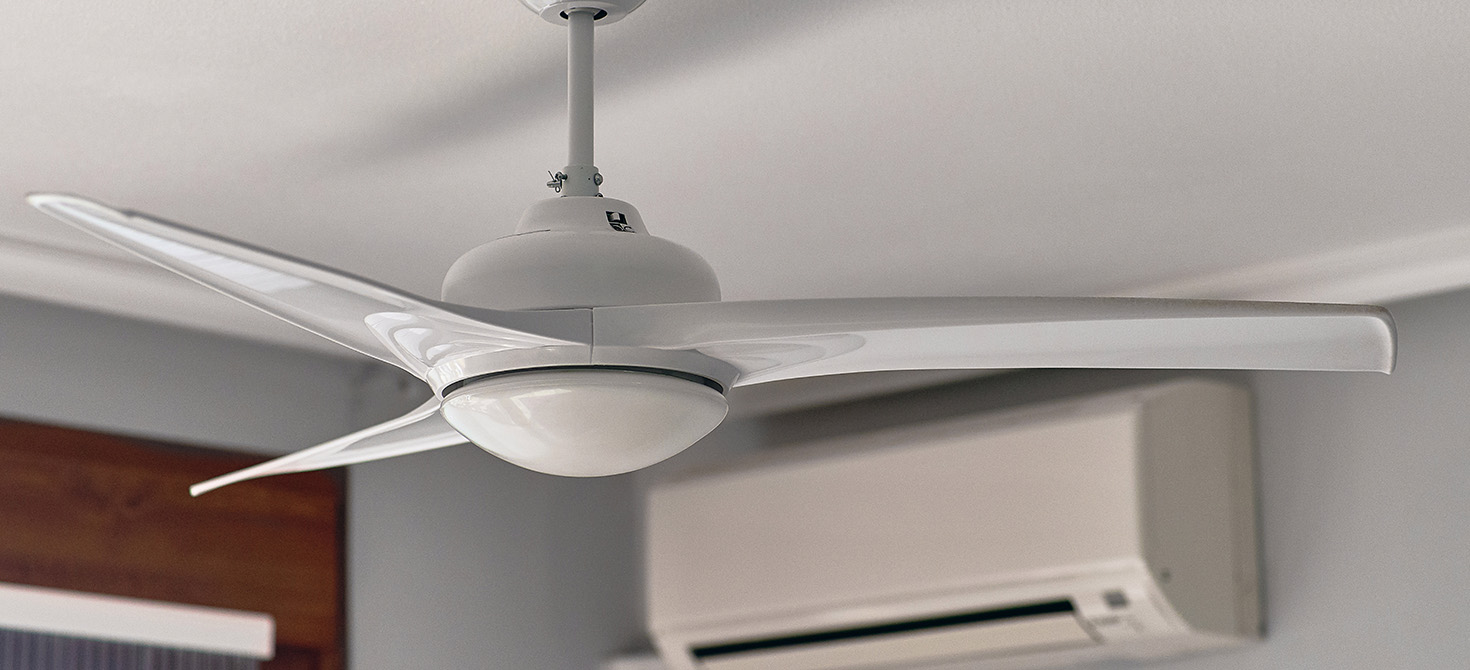- Furnishing tips
- 0 likes
- 1989 views

Ceiling fans: an extremely functional piece of furniture offered today in many design reinterpretations. This instrument represents the right alternative for all those people who cannot stand and do not particularly like air conditioning.
In this article we will provide you with important advice and suggestions regarding the choice of the best ceiling fan, capable of responding concretely to your needs and requirements. There are many questions and factors that need to be considered carefully when choosing a ceiling fan.
Here's everything you need to know before making your purchase!
Index
Ceiling fan: Which diameter to choose?
The ceiling fan is an extremely economical and effective tool, capable of creating a light breeze and a pleasant feeling of freshness in your environment. One of the first aspects to consider when choosing a ceiling fan is the width of the blades: this determines the amount of air that is moved and that generates the feeling of freshness mentioned above.
A large model of fan with low speed is certainly better than a small and faster model, also with regard to the aspect linked to consumption.
Obviously there are ceiling fans with different diameters on the market. The most popular ones are:
- Ceiling fans with diameters of 120, 130 centimetres: models capable of optimally cooling rooms of about 40 square metres.
Ceiling fan with light, what is it?
The ceiling fan with light is a special device that can perform two functions: to cool a room and to illuminate it. In most cases modern ceiling fans are nowadays equipped with a central light, so as to be able to adequately illuminate the room, replacing the classic chandelier.
Fan with remote control, cord or wall switch
There are many wall-mounted fans available on the market today. Fans with a remote control are very popular. The remote control provides digital control of the device (speed control, blades on/off and light).
Alternatively, it is possible to buy a fan with a simple cord control or a wall switch.
Fan with reverse direction of rotation
You can also opt for a fan with a reverse rotation system. These tools can be used during the winter season to move warm air (which tends to rise upwards) downwards, making it easier to heat rooms.

Ceiling fan: choice of material
Commercially available ceiling fans have between 2 and 5 blades. Regardless of the number of blades, the efficiency of the device remains almost unchanged. It is the inclination of the blades that determines the respective power of the device. The greater the inclination, the more powerful the fan motor must be.
The blades of ceiling fans are usually made of metal, wood or plastic. Depending on your decorating style you can choose:
- Designer ceiling fan with metal blades (matt or polished)
- Classic or rustic ceiling fan with dark wood and wicker blades
- Cheap ceiling fan with blades made of various plastic materials.
It should also be pointed out that there are nowadays also fans without blades on the market, which are able to circulate the air more diffusely. These fan models have a diameter of about 90 centimetres and are particularly effective for cooling rooms up to 30 square metres in size.
Ceiling fan: power, speed and reversibility
The main variables that characterise commercially available ceiling fans are the materials used to make the blades, the power, the speed and the reversibility.
As far as the power of a ceiling fan is concerned we can say that it tends to vary between 50 and 75 watts at full power and between 20 and 30 watts at reduced power. This is a power that is 30 to 50 times lower than that of a normal air conditioner. For this reason the ceiling fan is an absolutely economical instrument.
The speed of a ceiling fan varies according to the type of model. In general terms we can say that basic models are often equipped with two speeds. More powerful models can boast three or even four speeds, allowing a room to be cooled extremely quickly.
The minimum rotation speed of the blades of a fan is between 70 and 90 revolutions per minute. In fans equipped with a DC motor, the speed is 50 rpm.
The direction of rotation is also a feature to consider when choosing a ceiling fan. In winter mode the system rotates counterclockwise, so that the temperature in the room is even. The heat tends to rise until it reaches the ceiling; by ventilating in the opposite direction, the warm air is directed back towards the ground, thus optimising heating costs.
More tips for buying a ceiling fan
Regardless of which type of ceiling fan you decide to purchase and install in your home or work space, our advice is to choose a quiet ceiling fan.
It is important to point out that a high-end fan, kept at low power, is particularly quiet. On the other hand, some low-end models can be very noisy and annoying, which can disturb your daily peace and quiet.
To make sure you buy a quiet ceiling fan, it is essential to consult the leaflet and understand the decibel number of the device. Quiet fans should generate less than 48 dB at low speed.
